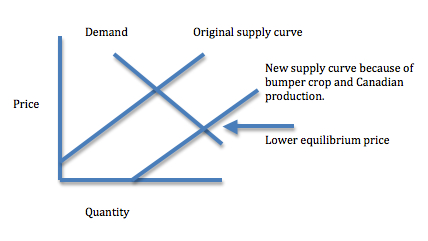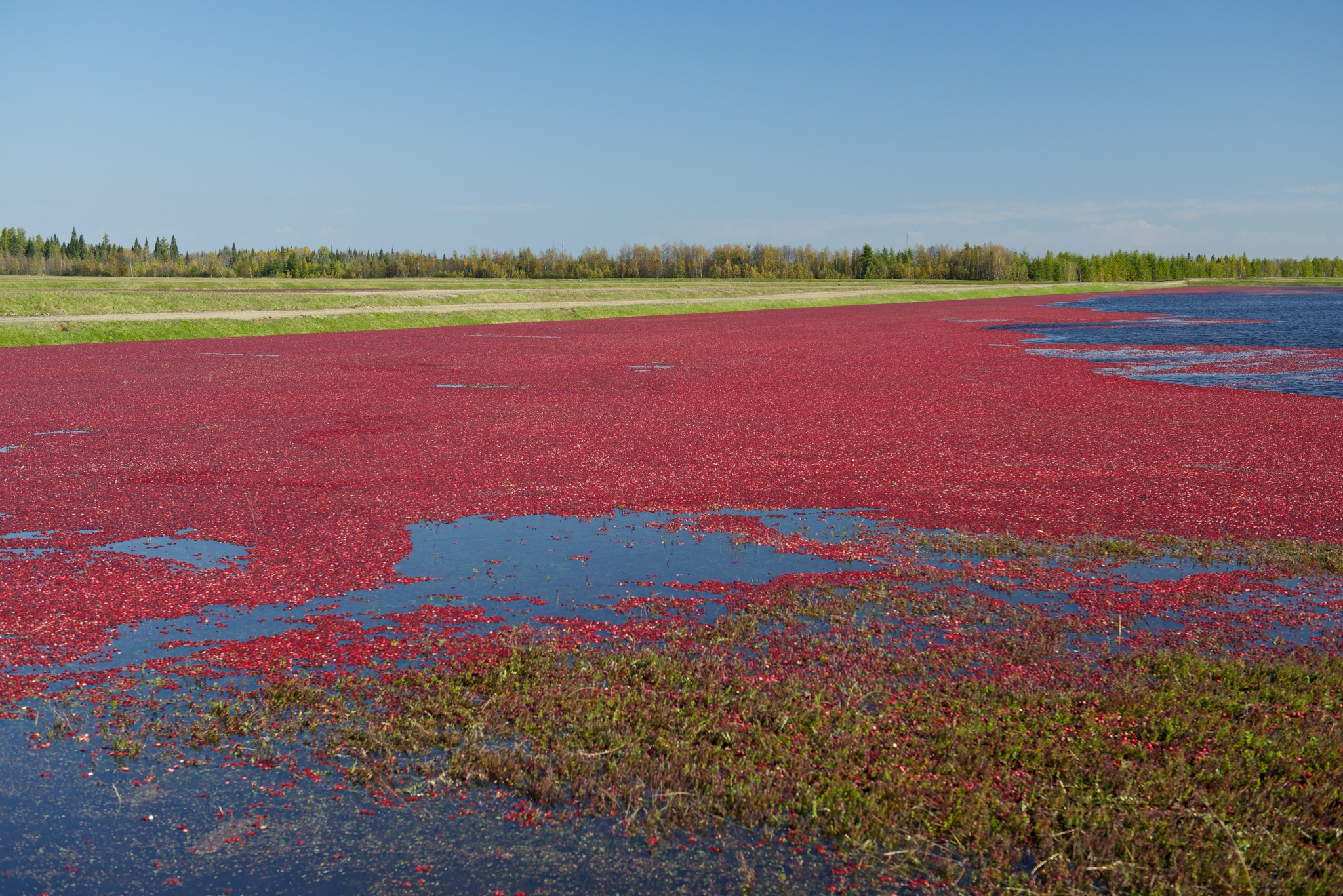Yesterday morning, during my “rantum scoot” around a Nantucket cranberry bog, our group leader unknowingly presented a supply and demand story.
This is the bog:
Nantucket Cranberries
Starting with some history, he said the island of Nantucket was ideally suited to growing cranberries because it had sand and water and the right climate. The problem was the price. Cranberry prices had sunk so low that the growers were making no money. With an increasing number of Canadian producers entering the market, last year’s inventory and this year’s bumper crop, supply was excessive. Whereas 5 years ago, producers had gotten almost $50 for a 100-pound barrel, now, some were receiving as little as $7.00. And, making the situation worse, as one cranberry processor explained, “”We’ve gone from sauce to juice to sweet-dried, but there’s no new use.”
Whenever price cascades in commodity markets, there is a good chance that the market has the solution.
Supply and Demand
With prices low and profits gone, some producers exit, the supply curve shifts upward and prices rise.
Prices went down like this.

Instead of waiting for the market to shift the supply curve back up, the growers in the US and cranberry producers like Canada agreed to production caps that would artificially lower supply and raise prices. Meanwhile, on the demand side, someone figured out how to achieve some product differentiation through new labeling that said “Nantucket Organic” for the cranberries they had always grown. The result? Health conscious consumers looking for a premium brand will increase their demand. And, instead of $7 a 100-pound barrel, for the “premium cranberries,” growers have begun to get $25.
Our Bottom Line: Competition
We are really talking about how firms compete. In perfectly competitive markets, having little power, firms need to wait for supply to drop and/or demand to increase. Here though, government is adjusting supply and growers are stimulating more demand by giving their cranberries an individual identity. The move to a premium label (with no product change) nudged those cranberries into a monopolistically competitive market where the seller has a bit more pricing power.
Another story for a future blog is how Ocean Spray, a cranberry cooperative has also elevated prices through more market control.






